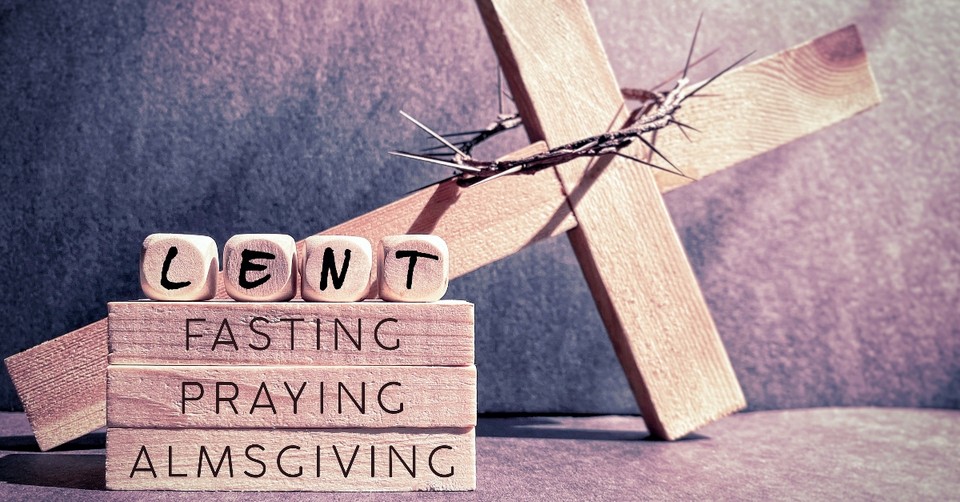What Is the Difference Between Lent and Fasting?

Every year, in the weeks leading up to Easter, Christians around the world set aside time to pray, fast, and reflect in preparation to commemorate Christ’s death and resurrection during Easter Week. This 40-day period of the Christian calendar, known as Lent, begins with Ash Wednesday and culminates on the Thursday before Easter, known as Maundy Thursday.
Fasting, on the other hand, is not bound to a specific period on the calendar. It is often more personal in nature, less corporate, and involves abstaining from food and/or water for a set period of time. Both fasting and Lent have their origins in examples from the Bible, though Lent has become more of a church tradition than a biblical mandate.
What Is the Significance of Lent?
Similar to Advent, the time set aside to prepare Christians for Christmas day, Lent encourages believers from around the world to prepare their hearts and minds for Easter, where we commemorate the death and resurrection of Jesus Christ, in whom our faith is founded.
Of course, many believers will ask: is Lent biblical?
While the Bible does not outline a specific 40-day period before Easter for the church to fast and pray, corporate seasons of prayer and fasting in times of spiritual crisis, repentance, and mourning were common in Scripture. For example:
Then all the sons of Israel and all the people went up and came to Bethel, and they wept and remained there before the Lord, and fasted that day until evening. And they offered burnt offerings and peace offerings before the Lord (Judges 20:26).
Jehoshaphat was afraid and turned his attention to seek the Lord; and he proclaimed a period of fasting throughout Judah. So Judah gathered together to seek help from the Lord; they even came from all the cities of Judah to seek the Lord (1 Chronicles 20:3-4).
“Then I (Ezra) proclaimed a fast there at the river of Ahava, to humble ourselves before our God, to seek from Him a safe journey for us, our little ones, and all our possessions” (Ezra 8:21).
In each and every province where the command and decree of the king came, there was great mourning among the Jews, with fasting, weeping, and mourning rites; and many had sackcloth and ashes spread out as a bed (Esther 4:3).
In these instances, a prophet, king, or judge would gather the people for a time of prayer and fasting to seek the Lord’s wisdom, prepare for the coming seasons, or lament for corporate sin committed.
In the New Testament, we read that the disciples of Jesus gathered often after His ascension for teaching, the breaking of bread, fellowship, and prayer (Acts 2:42).
Fasting was not uncommon amongst the leaders of the early church as they prepared to send each out on missionary journeys or seek the Lord’s guidance in the appointment and commissioning of elders and leaders (Acts 14:23).
Again, these instances do not specifically outline the period of fasting observed during Lent, however, like many holidays and traditions established by the church, Lent was born from the kind of fasting, preparation, and even lament seen in Scripture.
On an individual basis, fasting was even more common in the Bible.
In fact, it was the 40-day fasting of Jesus in the wilderness leading up to His ministry that many look to as a model for Lent today (Matthew 4)
However, the practice of abstinence or “giving up” something during Lent is rarely a 40-day period of not eating (more on this in a moment).
Beginning with Ash Wednesday, Christians from both the Catholic and Protestant traditions will often mark their foreheads with ash in the shape of the cross.
This is a deeply symbolic gesture, which models the use of ash used in the Bible. Here, ash signified grief and the recognition of sin as those in mourning often wore sackcloth and covered themselves in ashes in their despair.
Though Lent does not have to be as gloomy or despondent, Christians are often challenged to take on a posture of solemn confession and penance for their sin. This comes in the form of fasting.
For many people during Lent, even fasting can take many forms.
Though biblical fasting almost always entails the giving up of food for a set period of time, fasting during Lent often involves people around the world abstaining from various habits, foods, or vices.
In fact, non-believers sometimes use Lent as a reason to develop new disciplines or give up bad habits. In some instances, individuals will choose to splurge or binge on items to be fasted on Fat Tuesday, the day before Ash Wednesday, when Lent officially begins.
The period of self-sacrifice and self-examination during Lent, however, should remind Christians of Jesus’ ultimate sacrifice and suffering for their sins on the cross and their continual need for a savior.
Though somber, Lent is designed to steer believers to a season of celebration and joy, knowing that their hope for forgiveness, restoration, renewal comes through Christ’s death and resurrection.
There are, of course, many variations to the Lenten tradition, which is celebrated predominately in the Catholic church, but in most instances, the period of penance and fasting leading up to Easter prepares believers for a time of celebration during Holy Week, which begins with Palm Sunday and proceeds through Maundy Thursday, Good Friday, and Easter Sunday.
What Is the Biblical Purpose of Fasting?
The practice of fasting takes on several forms and has more precedent in Scripture than perhaps even Lent.
According to Arthur Wallis, author of God’s Chosen Fast, “When exercised with a pure heart and a right motive, fasting may provide us with a key to unlock doors where other keys have failed; a window opening up new horizons in the unseen world; a spiritual weapon of God’s providing, ‘mighty to the pulling down of strongholds.’”
Individuals such as Moses, David, Elijah, Ezra, Esther, Daniel, Jesus, Anna, and Hannah all fasted for periods of time and for specific reasons.
In almost every instance, however, fasting involved the literal abstaining from food.
Today, many have expanded the discipline of fasting to include anything that “hinders our communication with God.” Believers may fast from a variety of forms of entertainment, social media, or spending money.
We see this often in what many Christians choose to “give up” for Lent. However, if we are to follow the biblical definition of fasting, the literal abstinence of food is key.
Furthermore, Paul reminded believers not to make fasting an outward or religious “form of godliness” but rather a purposeful, internal spiritual discipline (2 Timothy 3:15).
Even prior to Paul’s ministry, Jesus told His followers to avoid walking around with “gloomy faces” or fasting in such a way that others will take notice.
“But as for you, when you fast, anoint your head and wash your face, so that your fasting will not be noticed by people but by your Father who is in secret; and your Father who sees what is done in secret will reward you” (Matthew 6:17-18).
The purpose of fasting should be personal, not promotional in its public display.
Though typically focused on fasting from food, few fasts ever last more than a few days or weeks.
We know that Jesus fasted for 40 days in the wilderness, but there is little evidence to suggest that He also gave up water for that time.
Only Moses (Deuteronomy 9:9, Exodus 24:28) and Elijah (1 Kings 19:8) were said to have fasted from food and water for 40 days and nights, but those fasts were undoubtedly sustained by supernatural means.
If not done properly, a fast can actually do more physical harm than good. Though the practice of “intermittent fasting” is said to have health benefits, biblical fasting focuses the heart and mind of the believer on God through petition, penitence, and preparation. Weight loss should never be the primary goal.
An absolute fast from food and water is not encouraged to last more than three days and should be treated as a short, focused fast reserved for a spiritual crisis or emergency (Ezra 10:6, Acts 9:9).
Another common fast seen in the Bible is the partial fast, in which the individual gives up specific foods for a period of time. The now popular Daniel Fast falls into this category (Daniel 10:3).
What Does This Mean?
Most people participate in more of a partial fast during Lent than an absolute or even traditional fast, and that’s fine.
So long as the believer’s heart and motives are correct, a proper fast, whether during Lent or at some other time in the calendar year, can have enormous spiritual benefits that strengthen the heart of the believer, prepare them for the coming season, and bring them closer to the heart and mind of God.
For further reading:
What Should I Give Up for Lent This Year?
Why Did Jesus Fast for So Long?
How to Discourage Eating Disorders During Lent
Photo Credit: ©iStock/Getty Images Plus/FREDERICA ABAN


Originally published March 10, 2022.





